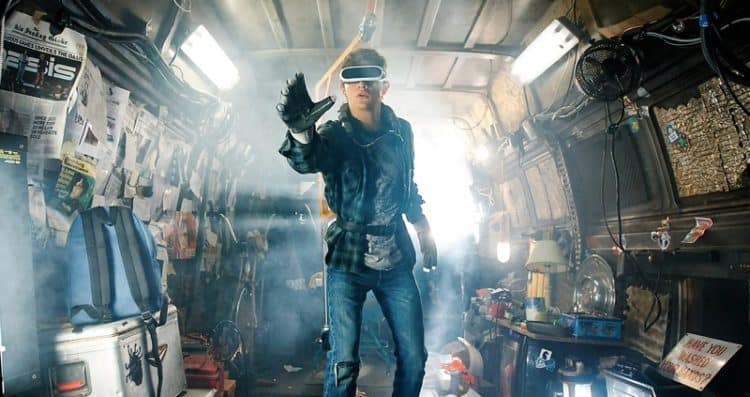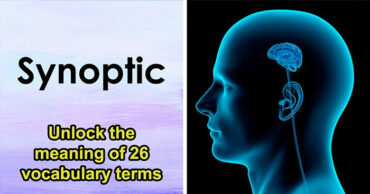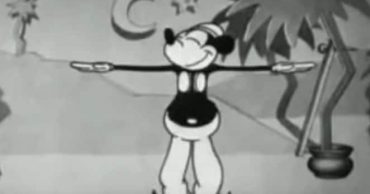
In March 2018, Steven Spielberg’s futuristic, CGI extravaganza adaptation of Ernest Cline’s 2011 bestseller Ready Player One hit theaters. The film was not a box office failure, but it also didn’t live up to the analyst predictions based on its epic scale, high price tag, and prestige from being a Spielberg-directed adventure film. The legendary director has always made genre films that define his status as a decades-long box office titan, while also making more serious dramatic films as more mature offerings in the off-season. But this is one Spielberg good time that seemed to just fade from theaters with a whimper and not a bang. The film’s reviews were mixed, and it seems that audiences seemed to follow along with the Rotten Tomatoes consensus this time around. That’s a shame since Ready Player One was in many ways, Spielberg’s best sci-fi offering since 2002’s Minority Report–but with the announcement of the Metaverse dominating most tech conversations these days, it’s odd to even call Ready Player One science fiction. For those who dislike the movie, I am sure they have their reasons; I can easily admit that the film drags a bit in the middle, but it’s still an enjoyable ride–and this movie is definitely a ride. It’s not exactly a widely-renowned classic, but it does deserve a bit more attention and more chances than it received. Here are the reasons why Ready Player One is an underrated Spielberg film.
It Faithfully Adapts the Book
Ernest Cline’s book was hailed as a “treasure trove for pop culture junkies” when it hit shelves in 2011. The novel instantly became a bestseller and Spielberg acquired the film rights shortly thereafter. All too often in book-to-film adaptations, the original source material is drastically altered to fashion what studio executives think will make for a better screen adaptation. But with Spielberg at the helm, the screenplay managed to remain largely faithful to Cline’s original unique vision. Since the elements of cline’s novel remained fully intact, Spielberg and his crew could then fashion a superb cinematic adaptation of the highly technical writing found within the book.
The characters are obsessed with living their lives inside of a futuristic model known as the Oasis, which is an advanced video game that syncs directly into a player’s brain–even to the point of commerce now being achieved through moves made within the Oasis. This creates a unique semblance between reality and virtual reality, and Spielberg provides a unique auditory and visual experience for the viewer that places us within this VR world of the characters perfectly. Nolan Sorrento (Ben Mendelsohn) is just as sleazy in the film as he appears to be in the book, and although Wade Watts is the protagonist in both the book and the film, the supporting characters have just as much vitality and importance in the film as they in Cline’s book.
The CGI Is Stunning
Ready Player One uses live-action filmmaking and actors, but the aesthetic of the film is an overall digital experience–quite literally, a beautifully designed video game on the silver screen. Spielberg and his visual effects team created the Oasis world within the film almost entirely as a computer simulation, which matched the dynamics of the story and the film’s themes. The film features rapid-fire editing through various video montages of the Oasis, in addition to audio distortions that mimic the game reality/real-world experiences of the characters. The design of the film was immersive and similar to the hyper-surreal video games of today. Through its superb use of automation, the film is similar to watching a video game–but also sort of like watching a friend play an actual video game where the moviegoer becomes a spectator in the game’s plot.
The film is also filled with throwbacks to previous Spielberg films, with the T-Rex from Jurassic Park (1993) having a significant cameo appearance. Additionally, a recreation of Peter Jackson’s version of King Kong (2005) comes to life for a memorable and thrilling sequence. And of course, the absolutely brilliant scene that pays homage to Kubrick’s The Shining (1980), which was one of Spielberg’s favorite Kubrick films. It is easy to see why Spielberg calls this one of the most difficult films he has ever made.
Amazing Soundtrack That Evokes Pure 80s Nostalgia
It would be no surprise if a large majority of Ready Player One’s huge budget likely went to music licensing rights. The film is filled with a large catalog of 1980s hits, which Spielberg likely remembers well since that decade was his certification as the most popular filmmaker in the United States. There is something uniquely satisfying in watching a Spielberg movie that manages to pay homage to so much 1980s nostalgia. From the opening scene set to Van Halen’s “Jump” to the closing climactic battle set to Twisted Sister’s We’re Not Gonna Take It,” the film has one of the best soundtracks of any film since at least 2011’s Drive. In addition to the inclusion of a ton of popular 80s music, there are also numerous 80s pop culture references sprinkled throughout the film. This may not mean much to those who dislike the 80s, but for those of us who are obsessed with the decade, Ready Player One is one of the best examples of 80s nostalgia in the last few years of 80s saturation in film and television.
It Predicted the Metaverse
The idea of the Oasis as a mega-tech immersion where people dedicate literally their entire biological lives to living inside of a VR fantasy version of what they wish their lives to be sounds eerily like Mark Zuckerberg’s Metaverse. Almost to the point of plagiarism since the concepts are so identical with only slight modifications and limitations. Ready Player One’s closing message was that we should all disconnect at some point each day and cleanse ourselves of digital reality to rediscover what it means to be human. I doubt Zuckerberg’s plans include any such message–but it will be fun for a while no doubt.Minority Report
 Follow Us
Follow Us





